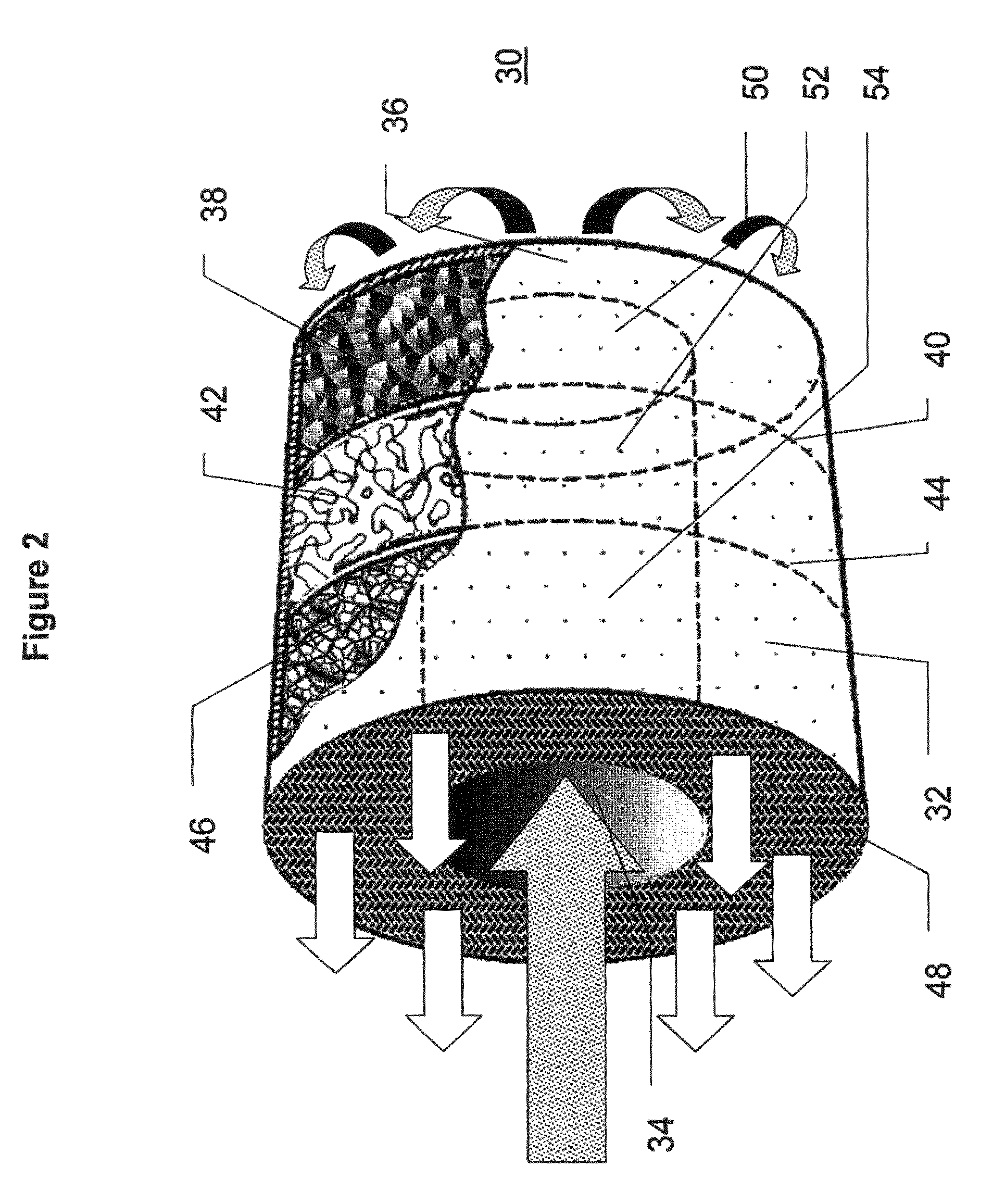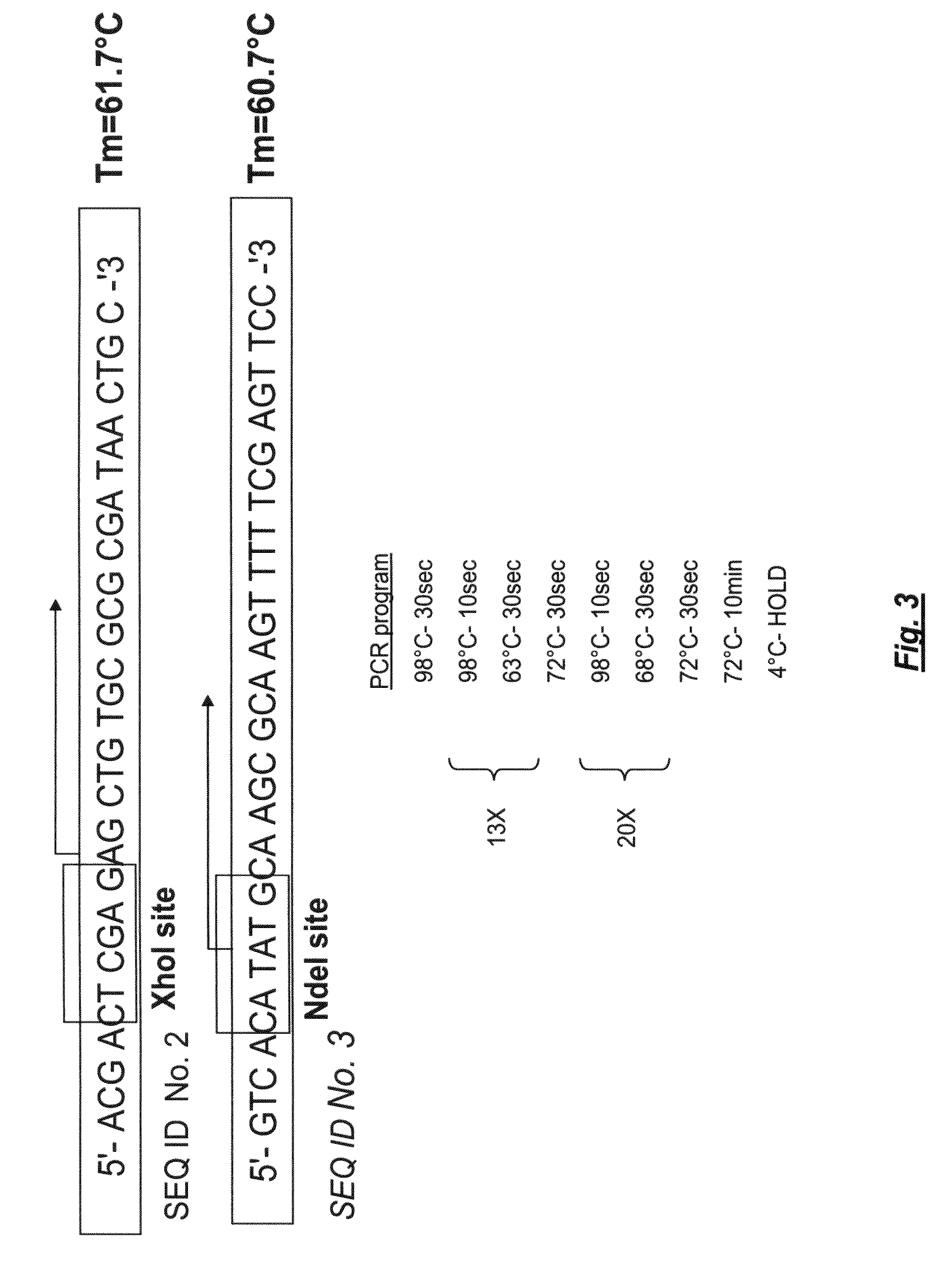Methods, Compositions And Devices For Maintaining Chemical Balance Of Chlorinated Water
- Summary
- Abstract
- Description
- Claims
- Application Information
AI Technical Summary
Benefits of technology
Problems solved by technology
Method used
Image
Examples
example 1
Immobilization of Cyanuric Acid Amidohydrolase on Silica Gel
[0184]Immobilization of cyanuric acid amidohydrolase on silica gel is performed based on a procedure described in U.S. Pat. No. 4,888,285.
[0185]Silica gel (having particle diameter of 0.3 μm and an average pore diameter of 500 Å) is aminated with γ-aminotriethoxysilane in toluene to prepare the SiO2—NH2 solid support matrix.
[0186]A commonly used conjugation method, typically performed under mild, non-denaturing conditions suitable for enzymes, is the well established Schiff-base (imine) formation between amines and aldehydes (see, Scheme 7 below). This universal conjugation method can be carried out readily under physiological, mild conditions, as described by Merril et al. [Science, 1981, 211, pp. 1437-1438].
[0187]Thus, an immobilization solution of cyanuric acid amidohydrolase (E.C. 3.5.2.15, 1500 U / ml) and glutaraldehyde 1.0-10% (w / v) in TRIS / HCl buffer (0.05 M, pH 8), is contacted with 10 ml of the aminated silica gel (...
example 2
Immobilization of Cyanuric Acid Amidohydrolase on Crystalline Sodium Aluminosilicate
Zeolite A
[0190]Immobilization of cyanuric acid amidohydrolase on crystalline sodium aluminosilicate (zeolite A) is performed based on a procedure described in U.S. Pat. No. 5,998,183.
[0191]A glutaraldehyde / buffer solution is prepared by mixing glutaraldehyde in 0.050 M TRIS / HCl buffer to produce a pH 8 buffer solution containing 1% (w / v) glutaraldehyde.
[0192]Sodium aluminosilicate (zeolite A, 20 mg) is mixed with 50 ml of the glutaraldehyde / buffer solution described above, and the resulting mixture is incubated at 20° C. for four hours. The mixture is then washed with HPLC grade water, and the remaining modified zeolite is recovered by vacuum filtration. The recovered zeolite is dried overnight at room temperature, and weighed.
[0193]An enzyme immobilization solution is prepared by dissolving 8000 units of cyanuric acid amidohydrolase (E.C. 3.5.2.15) in 100 ml of 0.050 M TRIS / HCl buffer (pH 8.0).
[0194...
example 3
Immobilization of Cyanuric Acid Amidohydrolase on Nylon
[0196]Immobilization of cyanuric acid amidohydrolase on nylon is performed based on a procedure described in U.S. Pat. No. 5,310,469.
[0197]Nylon beads (having particle diameter of 0.3 μm) are treated with hydrochloric acid so as to partially hydrolyze amide bonds of the polyamide matrix surface to thereby obtain free amine groups on the surface of the solid support matrix.
[0198]An immobilization solution of cyanuric acid amidohydrolase (1500 U / ml) and glutaraldehyde 1.0-10% (w / v) in TRIS / HCl buffer (0.05 M, pH 8), is contacted with a sample of the partially hydrolyzed nylon beads at room temperature for 4 hours, so as to affect the conjugation of the enzyme to the immobilization solid nylon support matrix via Schiff base formation, as described hereinabove.
[0199]Thereafter, the treated matrix is washed with TRIS / HCl buffer (0.05 M, pH 8) to remove unbound enzyme and glutaraldehyde and the resulting immobilized enzyme is recovere...
PUM
| Property | Measurement | Unit |
|---|---|---|
| Fraction | aaaaa | aaaaa |
| Fraction | aaaaa | aaaaa |
| Fraction | aaaaa | aaaaa |
Abstract
Description
Claims
Application Information
 Login to View More
Login to View More - R&D
- Intellectual Property
- Life Sciences
- Materials
- Tech Scout
- Unparalleled Data Quality
- Higher Quality Content
- 60% Fewer Hallucinations
Browse by: Latest US Patents, China's latest patents, Technical Efficacy Thesaurus, Application Domain, Technology Topic, Popular Technical Reports.
© 2025 PatSnap. All rights reserved.Legal|Privacy policy|Modern Slavery Act Transparency Statement|Sitemap|About US| Contact US: help@patsnap.com



